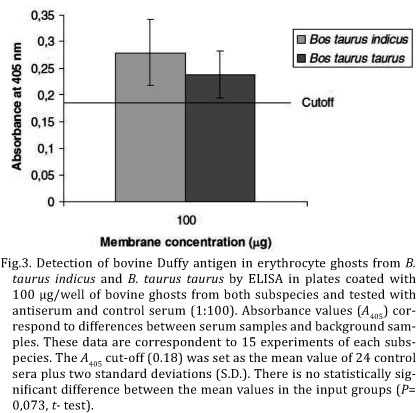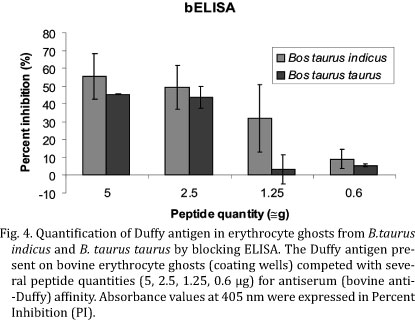Babesiosis is one of the most important diseases affecting livestock agriculture worldwide. Animals from the subspecies Bos taurus indicus are more resistant to babesiosis than those from Bos taurus taurus. The genera Babesia and Plasmodium are Apicomplexa hemoparasites and share features such as invasion of red blood cells (RBC). The glycoprotein Duffy is the only human erythrocyte receptor for Pasmodium vivax and a mutation which abolishes expression of this glycoprotein on erythrocyte surfaces is responsible for making the majority of people originating from the indigenous populations of West Africa resistant to P. vivax. The current work detected and quantified the Duffy antigen on Bos taurus indicus and Bos taurus taurus erythrocyte surfaces using a polyclonal antibody in order to investigate if differences in susceptibility to Babesia are due to different levels of Duffy antigen expression on the RBCs of these animals, as is known to be the case in human beings for interactions of Plasmodium vivax-Duffy antigen. ELISA tests showed that the antibody that was raised against Duffy antigens detected the presence of Duffy antigen in both subspecies and that the amount of this antigen on those erythrocyte membranes was similar. These results indicate that the greater resistance of B. taurus indicus to babesiosis cannot be explained by the absence or lower expression of Duffy antigen on RBC surfaces.
Babesiosis; cattle; Duffy antigen; hemoparasites




